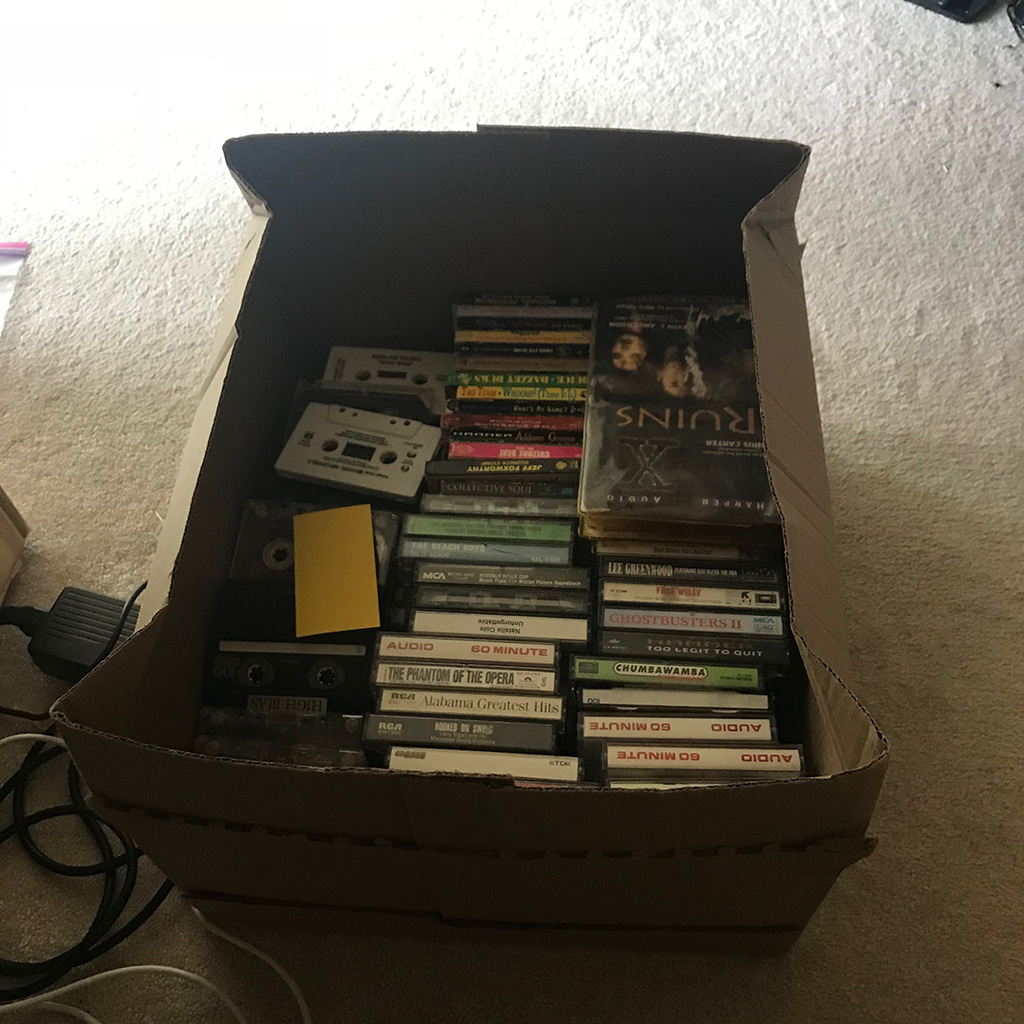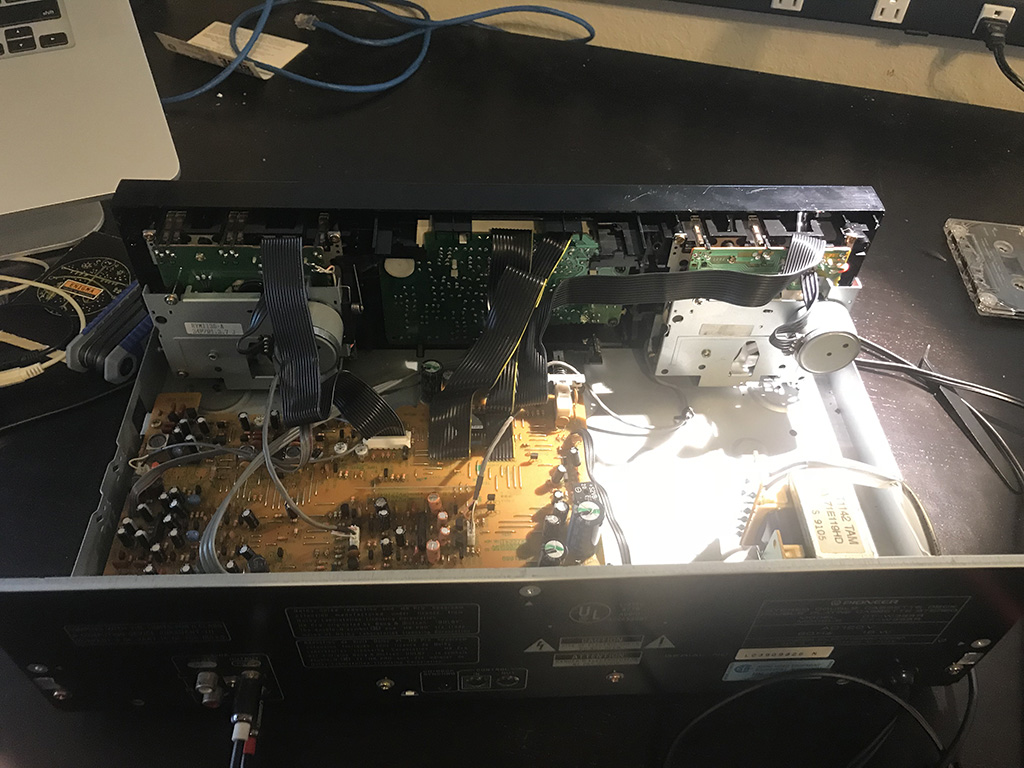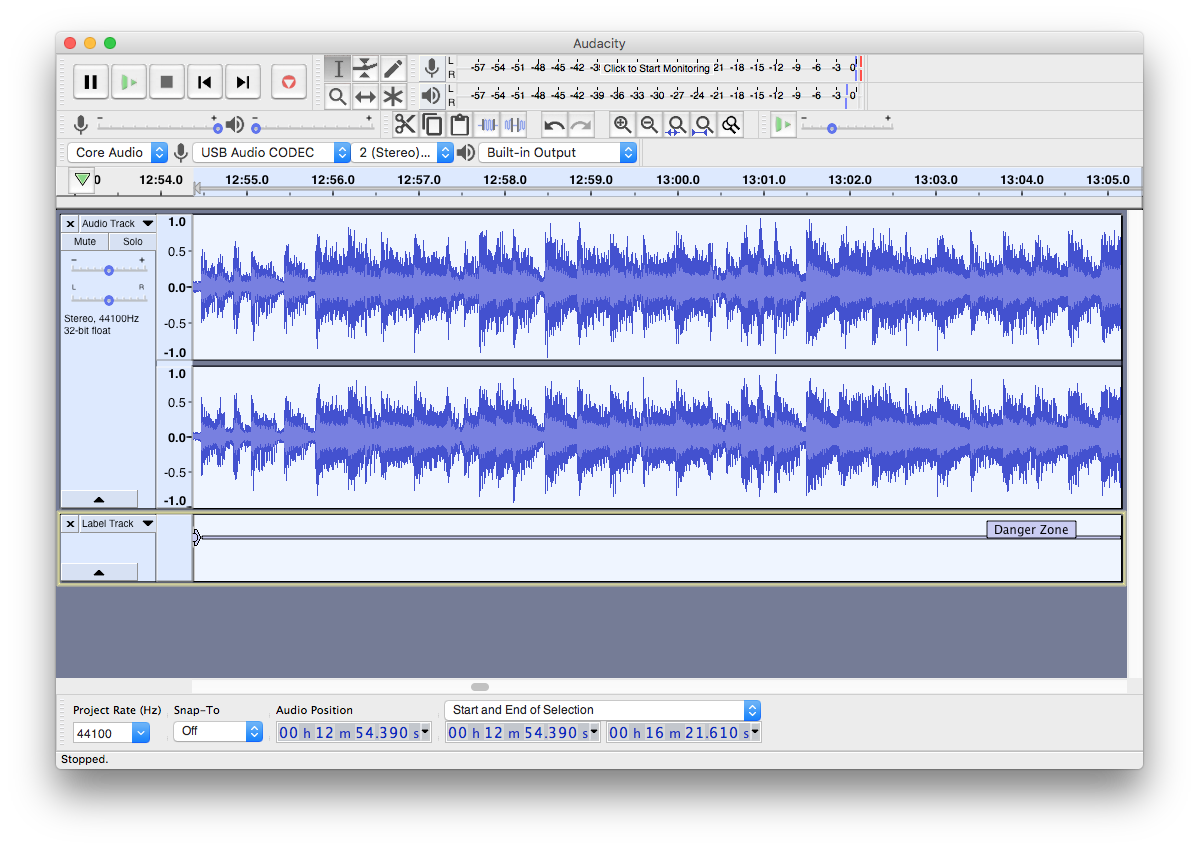Like most people who grew up in the 80s and 90s, I had a pretty large collection of cassette tapes. But probably unlike a lot of people, I’ve managed to hang onto them, or at least a lot of them, over the years. This big box of tapes has traveled with me through probably a dozen moves over the years, and it’s always been in the back of my head, “I should probably digitize them.”
The thing was, I had a bunch of cassette albums, sure, but most of them I eventually replaced with CDs and later ripped to MP3s. But I had a ton more of mix tapes and TV recordings.
For those who don’t remember or weren’t born during the cassette era, a mixtape was a home produced mix of songs you liked. Much like we do today with iTunes playlists, we did in the 80s and 90s with cassette tapes. The homebrew way was to just have a cassette recorder and a player next to each other and try to keep the room really quiet, but later on dual cassette boom boxes were available that make making mix tapes really easy.
The other thing I had were a ton of TV recordings. I would record some of my favorite TV shows on cassette, then I could listen to them anytime and anywhere. It was a bit like an early podcast!
So I had this box of about 200 cassette tapes, and I finally decided this year it was time to tacle the digitization project before they degraded any further. So here are some lessons I learned while doing this project.
Equipment
I don’t own anything capable of playing cassettes anymore. My last cassette capable device (a shelf system) I got rid of some time ago. So my first step was to aquire a cassette deck.
I was looking for a cassette deck with RCA outputs and auto-reverse. If you are going to tackle a project like this, you will need something capable of auto- reverse. This means that when it reaches the end of the cassette, it automatically flips sides and starts playing the second side. This will save you a lot of time and effort especially if you are doing parts of this unattended. Having a deck with “smart skip” functionality (where you can fast forward through songs and stop at the gaps) is another very helpful function to have.
I was hoping to find one that has variable speed control. If I could output at 2x and then slow it back down using software that would have made this project even faster. But these days beggers can’t be choosers, so I had to go with what I could find.
I asked on Facebook and one of my friends had a deck he wasn’t using anymore that he lent me. You can also hit Craigslist, Facebook Marketplace, etc. Just be aware that cassette decks are starting to be hard to come by so, if you are considering tackling a project like this, I would suggest not waiting too much longer. So I ended up using a Pioneer CT-W355R for this.
When my friend sent me his old deck, it ended up needing a bit of work. This is not surprising. Ask anyone who repairs old equipment, it’s bad news for these old mechanical systems if they sit idle for long periods of time. In this case I ended up having to replace belts on both sides of the deck. Fortunately, both types of belts (four in total) were still available and cheap. I think I spent about $20 on belts and a couple hours taking it apart, replacing the belts, cleaning, lubricating and putting it back together.





